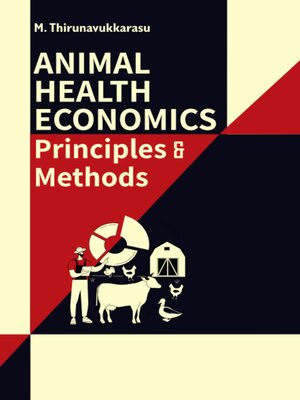
Sign up to save your library
With an OverDrive account, you can save your favorite libraries for at-a-glance information about availability. Find out more about OverDrive accounts.
Find this title in Libby, the library reading app by OverDrive.



Search for a digital library with this title
Title found at these libraries:
| Library Name | Distance |
|---|---|
| Loading... |
Expanding urbanization and increasing per capita income continuously push the demand for protein-rich livestock and poultry products. As a result, although there has been a tremendous increase in livestock and poultry output in the recent past, this glowing trend is not without any issues. Economic losses arising from animal diseases continue to be a major concern. Hence, diseases are less tolerated by the farmers and entrepreneurs as they dwindle the attainable farm output and income. Animal diseases also have serious negative effects on farm-related industries like feed manufacturing firms and product processing businesses, besides causing a severe setback in export markets.Unfortunately, there are no adequate reading materials available on the economics of animal diseases and their control. Although the developed countries had started working in the field of animal health economics as early as 1970s, developing countries like India lagged behind and started working in this field only in 1990s. This book has been written with the basic purpose of documenting the principles and methods of animal health economics, relatively a newer discipline for the country, to propagate the knowledge of the concepts and procedures in measuring animal disease frequencies, disease loss estimation methods, and economic principles underlying disease control to the students of veterinary and animal sciences, practicing veterinarians, academicians, research workers, planners and administrators in the field of livestock and poultry production.The purpose of this book is not to make a veterinarian an economist, but to make him / her understand the basic principles of economics as applied to veterinary epidemiology, disease loss estimation, and disease control and prevention. Hence, this book, the first of its kind in India, is expected to be of help to all those concerned about growth of livestock and poultry subsectors.







